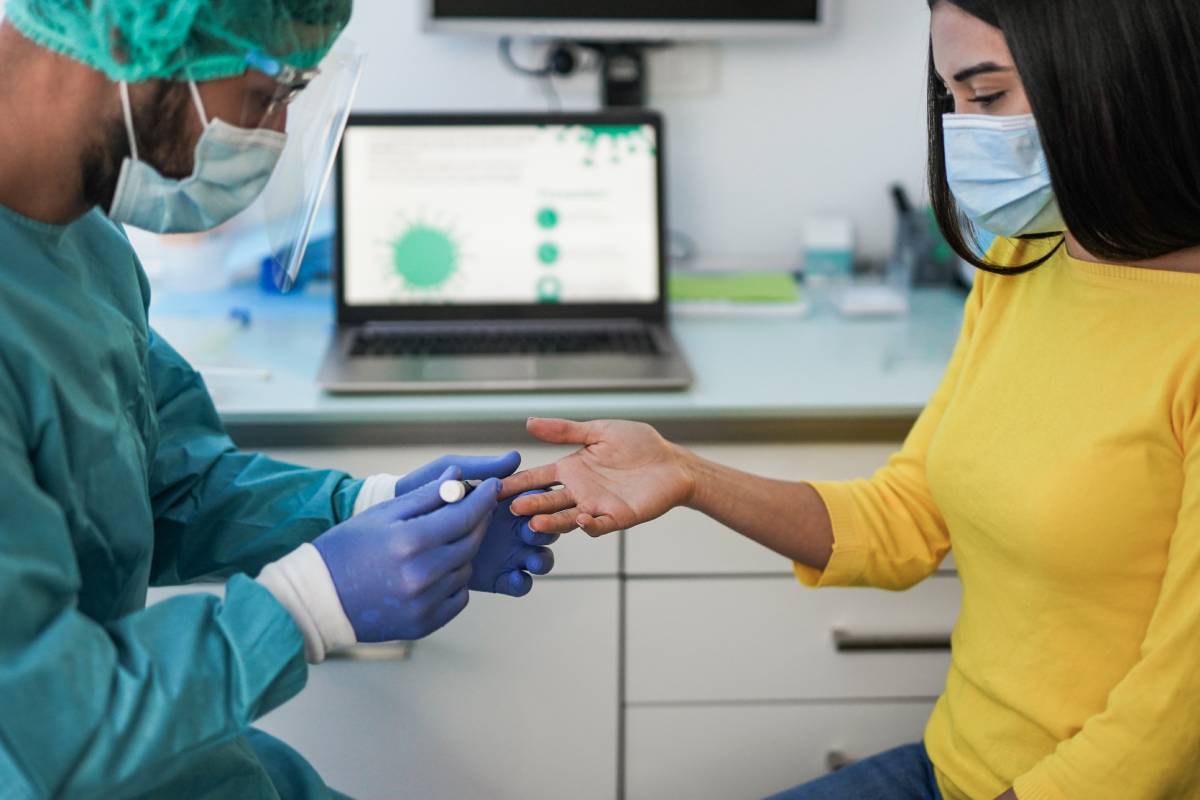COVID-19 infection has been associated with a myriad of long-term effects: fatigue, sleep disorders, and even disruption of menstrual cycles.1 However, one of most alarming reported symptoms is hyperglycemia, or what physicians are referring to as “newly diagnosed diabetes.” Interestingly, rises in COVID-19 cases have been closely correlated with increases in initial diagnoses of temporary diabetes.
A study conducted by Cromer et al. sought to characterize newly diagnosed diabetes mellitus as compared to pre-existing diabetes in patients admitted to Massachusetts General Hospital for COVID-19 (n=1902) between March and September of 2020.2 Hyperglycemia was characterized as glucose levels of 300 mg/dL or above – well above the range that can normally be induced by stress. A number of qualifications were required for a patient to be considered “newly diagnosed”:
“If a patient (1) did not report a history of diabetes, (2) had no clinical notes reporting a diagnosis of diabetes in any available health system record, (3) had no HbA1c values ≥6.5% (48 mmol/mol), (4) had no random glucose values greater than 200 mg/dL (11.1 mmol/L), and (5) had never taken a non-metformin diabetes medication, they were classified as having “newly diagnosed diabetes.”
Using this operational definition, the researchers reported that roughly one-third of the patients had a history of diabetes, whereas thirteen percent were newly diagnosed in the hospital.
Cromer et al. then closely documented glucose measurements, total insulin administered during the hospital stay, length of stay, incidence of diabetic ketoacidosis, ICU admission, and mortality. A number of longitudinal outcomes were also recorded, including diabetes type, glycemic trajectory, and diabetes persistence versus regression in the months following patients’ hospital admission for COVID-19.
There were several notable differences between patients that presented with newly diagnosed diabetes and those with a preexisting diagnosis, both in demographic and in outcome. Interestingly, COVID-19 patients diagnosed with temporary diabetes tended to be younger and of non-white ethnicity compared to the previously diagnosed group. The authors noted that only a third of patients in this demographic had a history of pre-diabetes. Moreover, there was a strong correlation between inflammatory markers as well as ICU care and a new diagnosis of diabetes. However, newly diagnosed individuals tended to experience improved outcomes, require less insulin, and spend less time in hospital care compared to those with previous hyperglycemia. Moreover, almost half of these patients regressed back to a pre-diabetic or normoglycemic state by the follow-up, performed in July of 2021.
Compared to previous studies and anecdotal evidence, this study reported unexpectedly low rates of COVID-related hyperglycemia.3,4 Two main factors may have contributed to this difference: first, the authors mention that many patients who were initially thought to be newly diagnosed actually had a history of hyperglycemia documented in their medical records. Second, the authors used a more rigorous definition of hyperglycemia, which excluded patients which may have been considered hyperglycemic in other studies.
Overall, Cromer et al. revealed that COVID-19-related temporary diabetes likely differs in onset and outcome from standard diabetes. In addition, their preliminary evidence suggests that inflammation from COVID-19 infection could play a significant role in disease pathogenesis. However, the exact mechanism behind the phenomenon remains to be discovered.
References
1 Centers for Disease Control and Prevention. (2021). Post-covid conditions. Centers for Disease Control and Prevention. Retrieved March 11, 2022, from https://www.cdc.gov/coronavirus/2019-ncov/long-term-effects/index.html
2 Cromer, S. J., Colling, C., Schatoff, D., Leary, M., Stamou, M. I., Selen, D. J., Putman, M. S., & Wexler, D. J. (2022). Newly diagnosed diabetes vs. pre-existing diabetes upon admission for COVID-19: Associated factors, short-term outcomes, and long-term glycemic phenotypes. Journal of diabetes and its complications, 36(4), 108145. https://doi.org/10.1016/j.jdiacomp.2022.108145
3 Yuan, S., Li, H., Chen, C., Wang, F., & Wang, D. W. (2021). Association of glycosylated haemoglobin HbA1c levels with outcome in patients with COVID-19: A Retrospective Study. Journal of cellular and molecular medicine, 25(7), 3484–3497. https://doi.org/10.1111/jcmm.16431
4 Li, H., Tian, S., Chen, T., Cui, Z., Shi, N., Zhong, X., Qiu, K., Zhang, J., Zeng, T., Chen, L., & Zheng, J. (2020). Newly diagnosed diabetes is associated with a higher risk of mortality than known diabetes in hospitalized patients with COVID-19. Diabetes, obesity & metabolism, 22(10), 1897–1906. https://doi.org/10.1111/dom.14099
